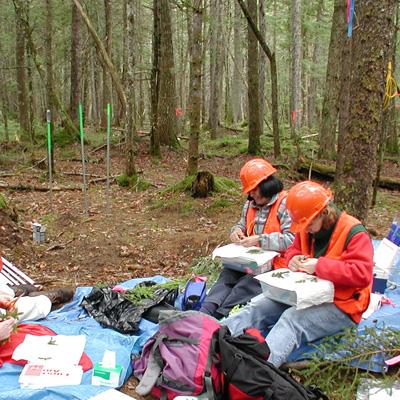Impact of Nitrogen Fertilization/Deposition on Foliar Nutrition and Stress Physiology of Coniferous and Broadleaf Trees across the Northern United States

Atmospheric deposition of nitrogen may cause forest decline or enhance forest productivity depending on the initial nitrogen status of the soil and the rate and duration of nitrogen deposition. Continuous input of nitrogen can move ecosystems towards nitrogen saturation. A major goal of this research has been to develop a set of early physiological and biochemical markers that can assess the positive or negative impacts of nitrogen deposition on forest productivity in asymptomatic forest stands.
NSRC researchers analyzed tree leaf samples for polyamines, individual amino acids, and chlorophyll from forest study sites to which nitrogen has been added in various forms. These sites included: Hubbard Brook Experimental Forest in New Hampshire; Big Moose Lake area in New York; Bear Brook Watershed in Maine; Howland Forest in Maine; Harvard Forest in Massachusetts; and Delaware River Basin (nitrogen addition was from acidic deposition only). Some sites had conifers while others had hardwoods or mixed woods.
In most cases, concentrations of putrescine, arginine, and calcium in leaves changed significantly in response to nitrogen additions of higher than 25 kilograms per hectare per year for more than 5 years. Under chronic nitrogen deposition conditions over prolonged periods (Harvard Forest study), most amino acids were found to significantly increase in quantity. With one exception, putrescine levels were found to increase in proportion to decreases in foliage calcium and soil calcium levels. Based on leaf physiology, hardwoods were more sensitive to nitrogen addition than red spruce growing at the same site.
